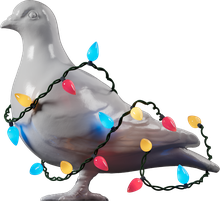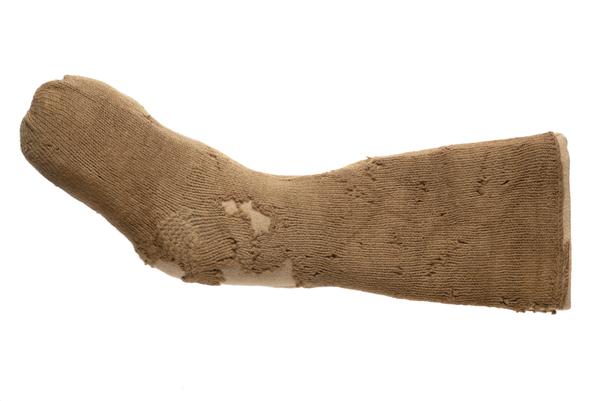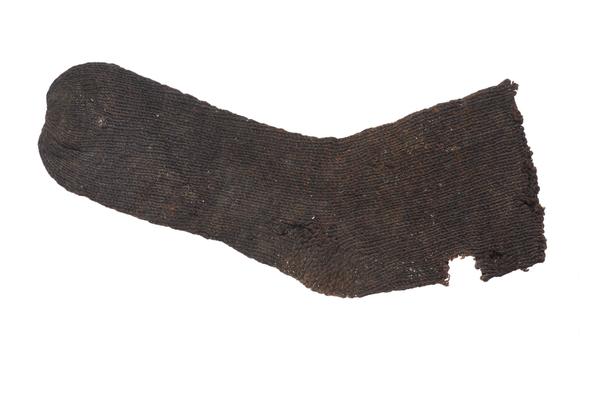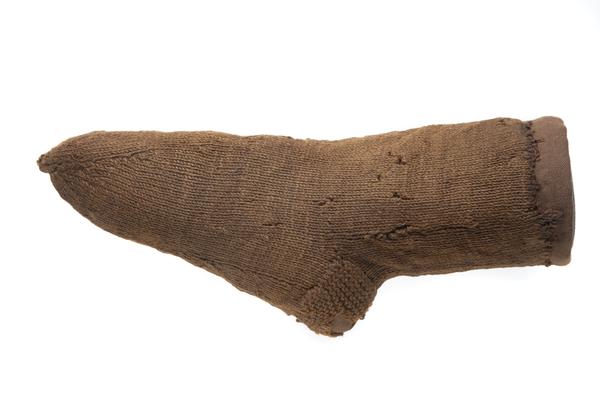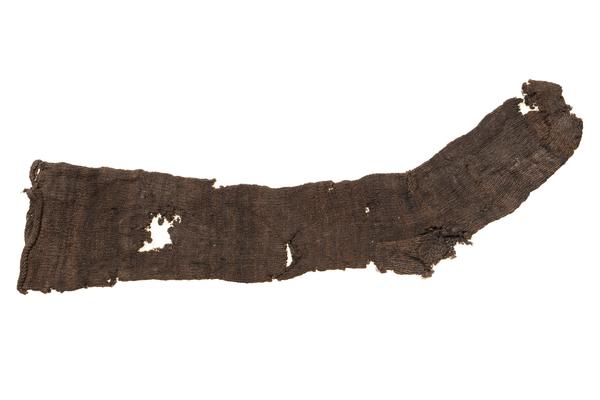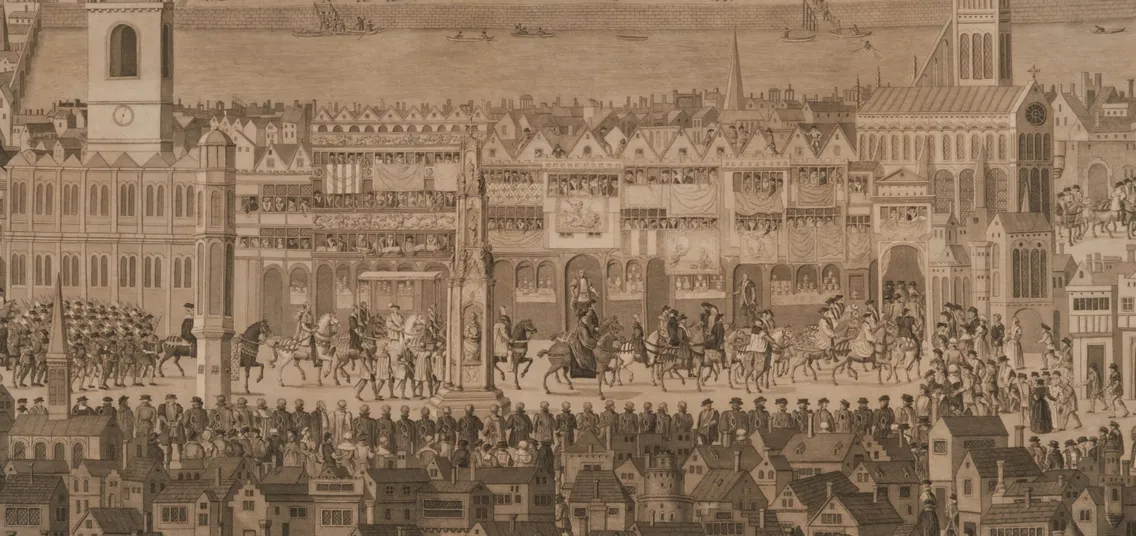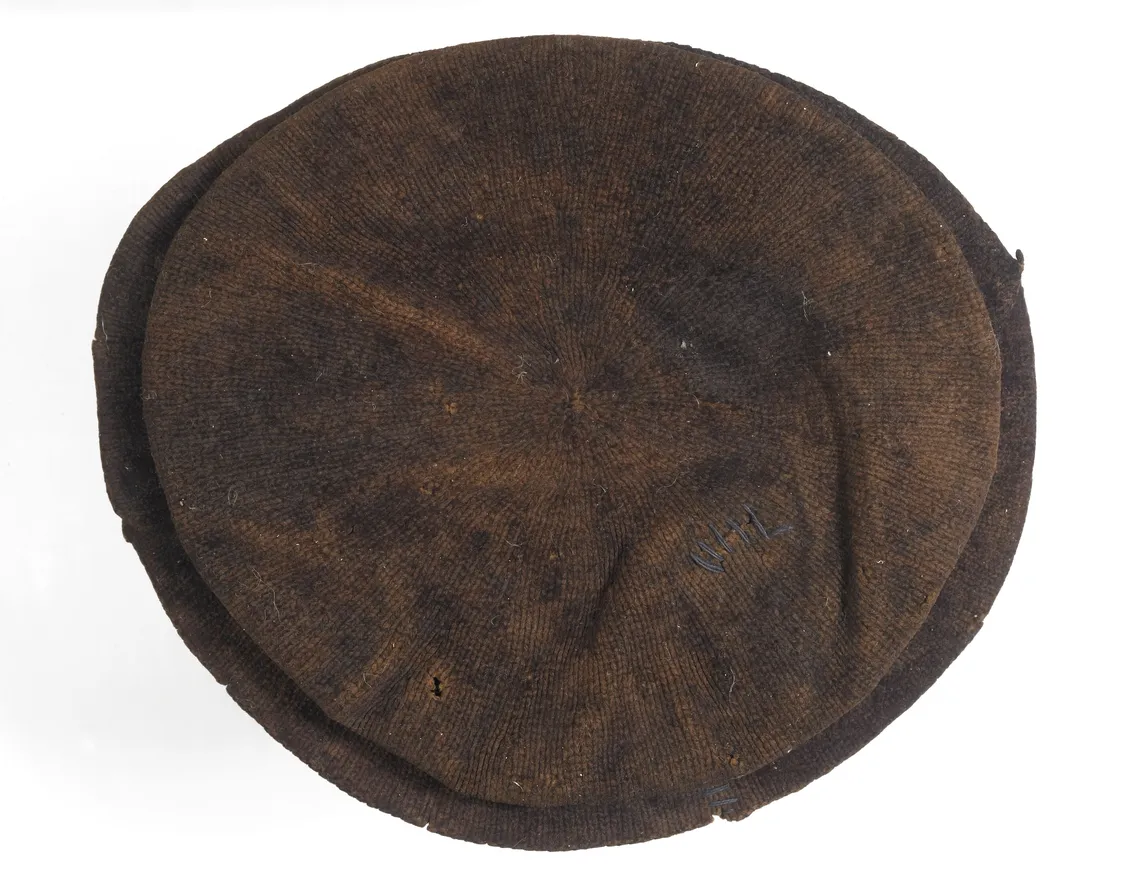15 September 2022 — By Lucie Whitmore
Knit & purl: Tudor knitting in London
Knitting in Tudor London was more than a craft, it was a thriving industry. From everyday stockings to royal attire, it shaped both fashion and economy. Explore how this craft wove into London’s history.
The oldest objects in London Museum's store are kept carefully in drawers, nestled in tissue paper. These hats, stockings and garments were hand-knitted by 16th-century Londoners! While knitting has been in the public eye recently – thanks to the Covid-19 lockdowns and famous champions of knitting like Tom Daley – it has been a London pastime for at least 500 years. (While Daley’s Olympics trunks are not knitted, we do have an excellent collection of knitted caps.)
“I love the immediacy of knitting: I can make something for myself and then wear it straight away”
As a lockdown knitter myself, I very much enjoyed taking a closer look at these incredible objects, with my new knitting skills helping me to understand their design and construction. Before 2020, I had been intimidated by the complexity of knitting, but with some very patient teachers and a lot of free time on my hands I finally got my head around it and was instantly hooked.
I have not stopped knitting since, and have progressed from a slightly wonky pair of fingerless gloves to countless jumpers, hats, socks and cowls. I love the immediacy of knitting: I can make something for myself and then wear it straight away.

Samples of my own lockdown knitting.
Knitting techniques and tools in Tudor London
Londoners have been wearing knitted garments for many centuries, but it first became a common practice in the 16th century. This was when knitting gained popularity as a convenient way to make affordable clothes. By the end of the century, knitted stockings in particular would have been worn by almost everyone (previously, woven cloth leg coverings were more commonly worn). Stockings were sometimes knitted from silk, but wool was far more common – we have around 15 examples of knitted stockings in our collection.
Thanks to research by scholar Lesley O’Connell Edwards, we know a bit about their construction. Many of the stockings were knit “in the round", which means they were made using multiple needles (four or five) to create a seamless tube. With some of them we can see that they were knitted from the top down, and we know this because we can see where the knitter has made decreases in the rounds of knitting near the heel. Knitting needles at this time were more commonly known as knitting pins or wires, and usually had blunt rather than tapered ends.
As any knitter will tell you, the materials and equipment you use can make a big difference to your knitting experience, as well as the final product. I particularly enjoy working with wool from British sheep, and wonder whether it feels and behaves similarly to the yarn used by past Londoners.

The book of 'hows' or what may be done with wools in every home, about 1900.
Woollen caps and Tudor economy
While we don’t know exactly what kind of wool they used, we know that the knitted caps in our collection were seen to be fairly practical objects. Wool is naturally water-resistant because it contains lanolin (a sort of natural wax made by sheep to keep themselves dry). As such, wool was well-suited to the production of caps, which kept London’s working men warm and dry.
These wool caps were widely worn, and were available in a range of styles and prices. Their manufacture was an important industry. There were many stages involved in making a cap like this, from carding and spinning the yarn to the processes known as fulling and napping, which were used to finish the knitted fabric. We have around 60 examples in the collection – this high number reflecting London’s central place in the UK wool trade.
I also enjoyed learning the story of how these caps and stockings were discovered. They were excavated by workmen in the early 20th century, who were digging foundations for new buildings in the City. This was in the Finsbury and Moorfields areas of the city of London, within a mile east and north of London Museum.
The reason they are in such good condition is that they were fully immersed in mud. This may sound like a bad place for textiles to be, but the waterlogged mud creates an “anaerobic” environment – the lack of oxygen means that organic materials like wool and leather don’t rot. This 300-year mud-bath is also the reason that all these objects appear to be brown. We know that some of the caps were actually black, blue or red to begin with.
Rare survivors of Tudor knitting in our collection
The most unusual knitted objects in the collection are two garments that were worn by Tudor children: a mitten, and an infant’s vest. The mitten has been knitted from the top-down in two colours, with the contrast yarn providing a pattern at the wrist. It is interesting to think about how it came to be stranded in Finsbury, where it was found centuries later. Perhaps, it was dropped by a child playing in the fields that then covered that part of London.
The vest is a very rare survival of a whole knitted garment from this period. Like the stockings it was likely knitted in the round on four needles, which we know because it has no obvious seams. It does have a slit down the front of the vest, allowing it to be pulled on over the head.
Looking at these objects, we can see that knitting hasn’t changed much over the last 500 years – but some of the garments are a little different to those we would wear now! The basic “knit stitch” that creates that recognisable “V” stitch pattern is still the staple of most modern knitting projects, and many knitters still use four or five needles to knit “in the round” and create seamless garments.
If you would like to have a go at knitting some of the Tudor garments from our collection, you can find patterns based on some of our collection items in The Tudor Child: Reconstructing 16th Century Dress by Jane Malcolm-Davies.
Having honed my own skills, I think my next project will have to be a recreation of that Tudor mitten, just in time for another London winter.
Lucie Whitmore is Curator (Fashion) at London Museum.

